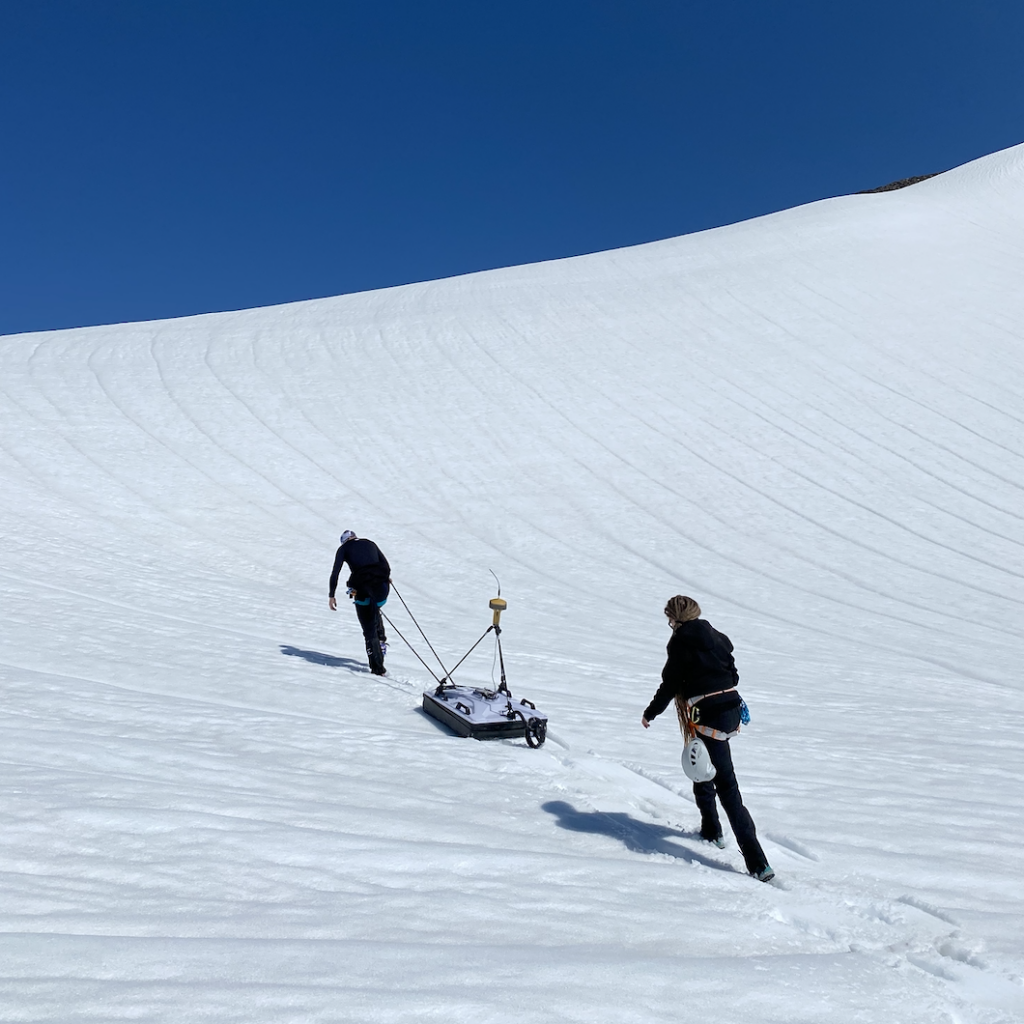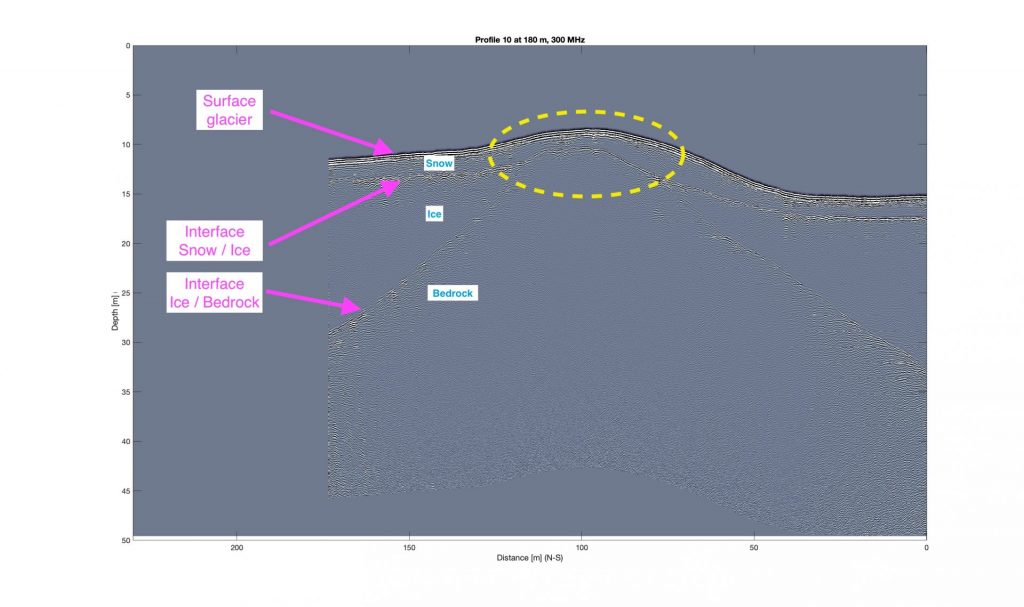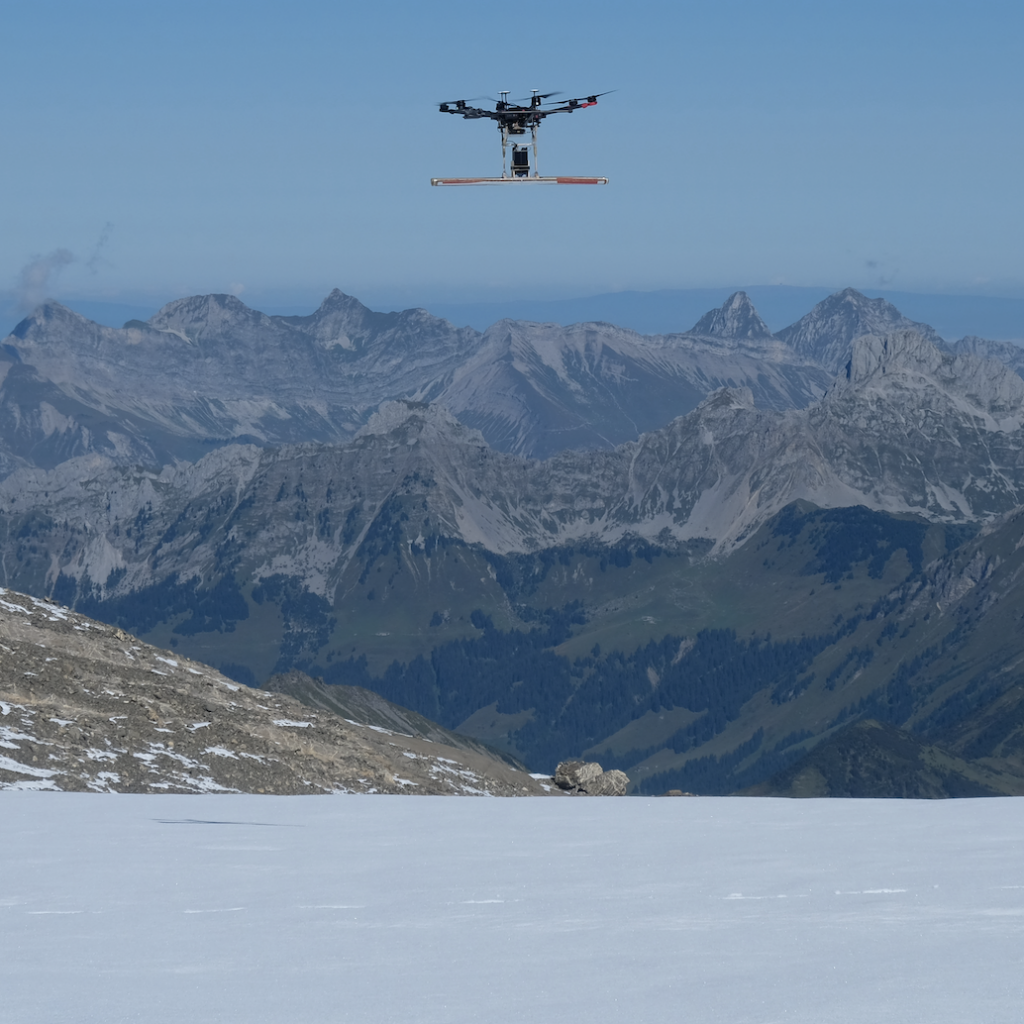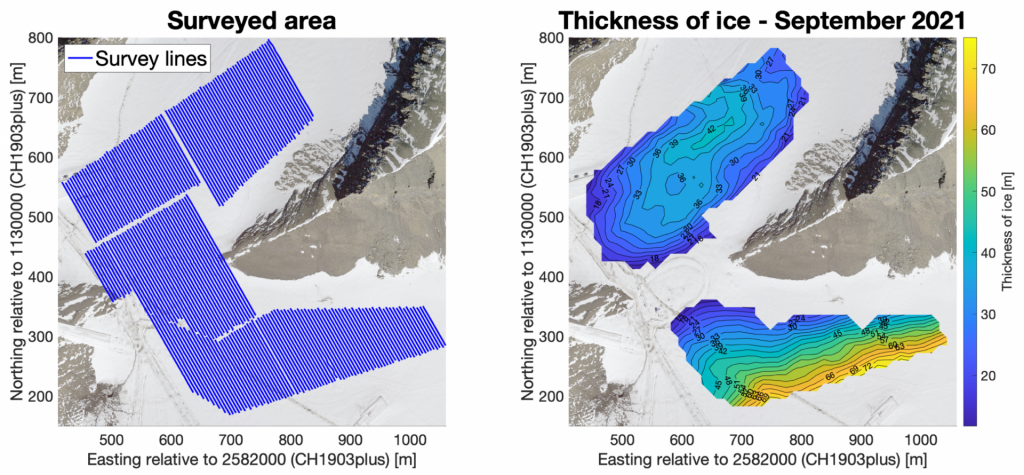The Tsanfleuron glacier is located in southwestern Switzerland at the border between the Vaud and Valais cantons. In collaboration with the ski resort Glacier 3000, we visited the area in the summer of 2021 with our drone-based GPR system, which was still under development. Our objective was to test the system over an easily accessible alpine glacier, while at the same time providing valuable data to the resort on the ice thickness. Indeed, the Tsanfleuron glacier was connected to the Scex-Rouge glacier by the Tsanfleuron pass, where the ice was known to be not very thick. A separation of the two glaciers at this location would have important impacts in that skiing at the pass would become completely dependent upon snowfall.
We first visited the area in June 2021 with a classic GPR system towed by a sled, in order to get an idea about the ice thickness and to plan our future drone-based GPR measurements. In one day of fieldwork, we approximately 3 line-km of GPR data. We found that the minimum ice thickness in the area was of roughly 3.5 m, which means that at the current rate of ice melt, the two glaciers might already be separated very soon.



We returned in September 2021 and acquired data with our first drone-based GPR prototype. Data acquisition via drone was significantly more efficient with the collection of ~30 line-km of data in less than three days. In regions where the ice thickness is less than ~10 m, the ice-bedrock interface cannot be seen in the drone-based data because it is masked by saturated amplitudes resulting from the emitted GPR pulse. On the north side of the pass, the bedrock topography shows a depression which may eventually become a lake. On the south side, the ice is noticeably thicker.

This work was beneficial for our drone-based GPR system development as it helped us to target areas for improvement. It became obvious, for example, that our drone needed to be updated with dGPS/RTK technology for more accurate flight paths, and several ways to optimize our survey methodology were identified. Nonetheless, the system showed numerous advantages in terms of efficiency and safety compared to sled radar, and our results were of high enough quality to provide Glacier 3000 with valuable information. In the summer of 2022, due to extremely high temperatures, the Tsanfleuron and Scex-Rouge glaciers finally separated and the Tsanfleuron pass became visible for the first time in more than 2000 years.
